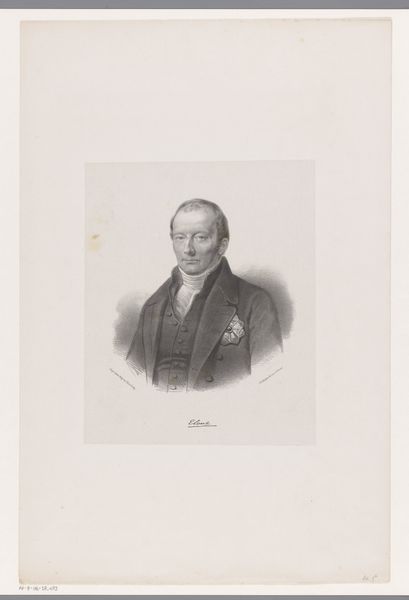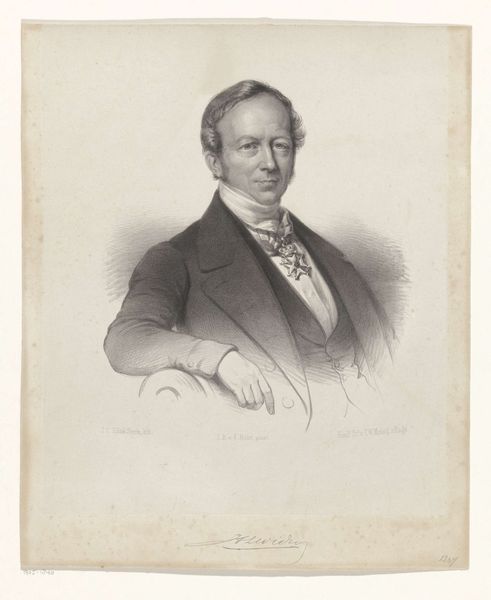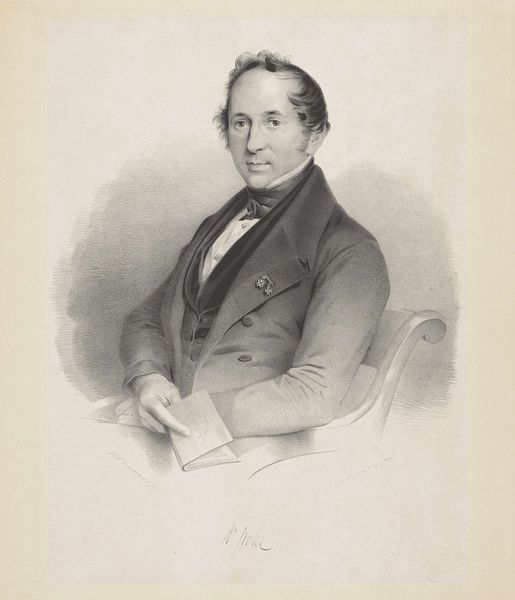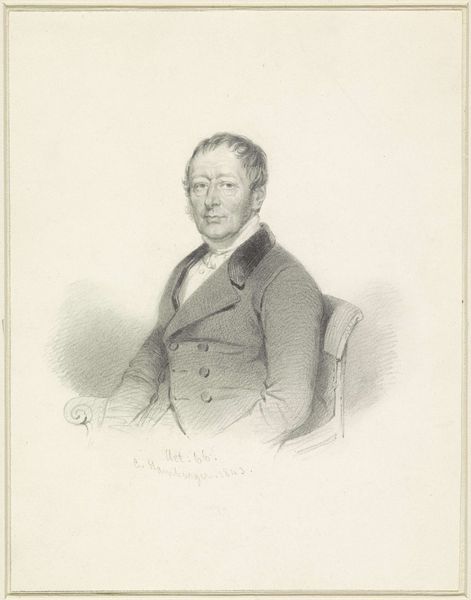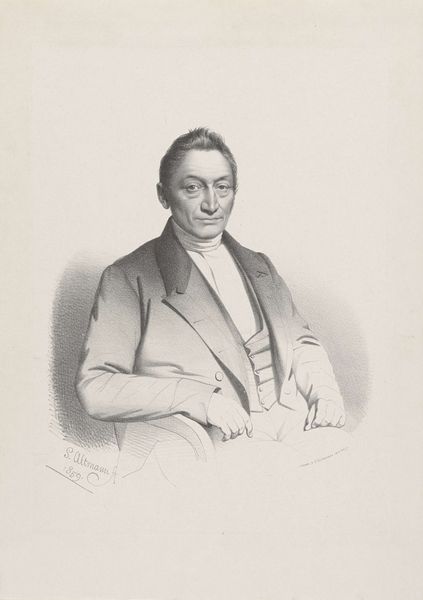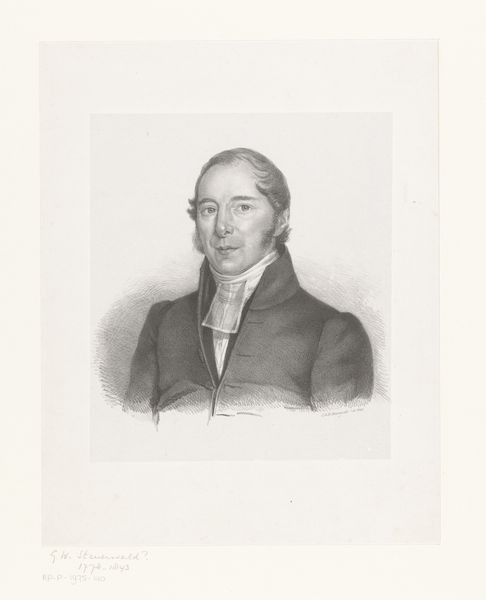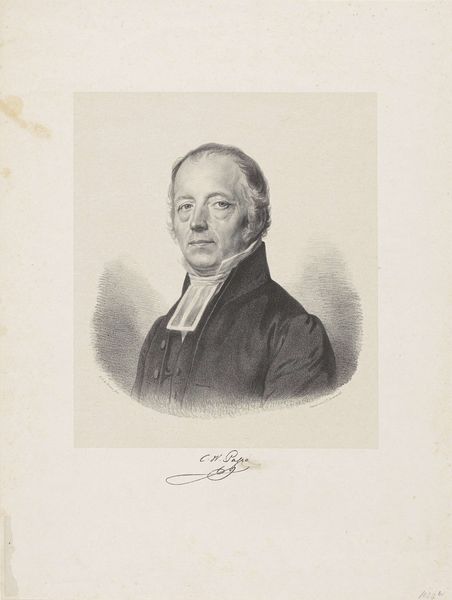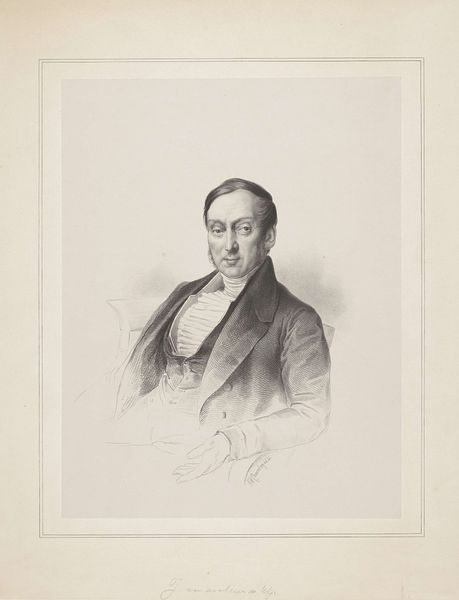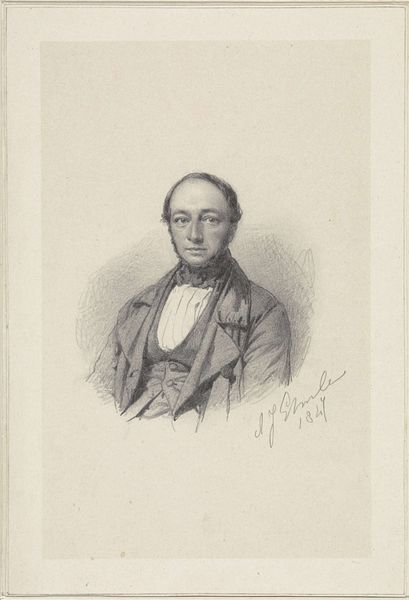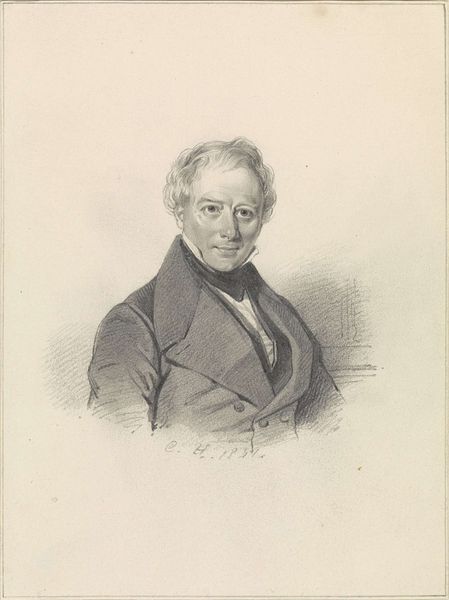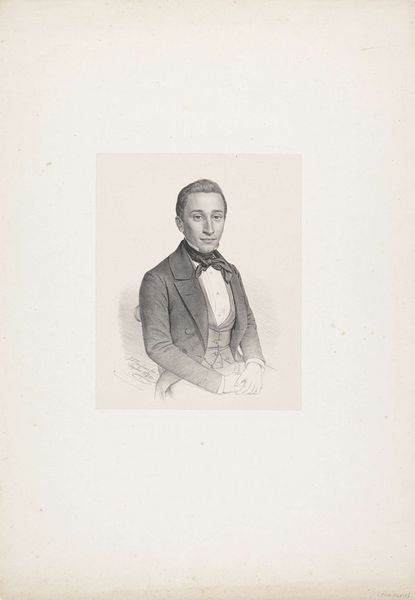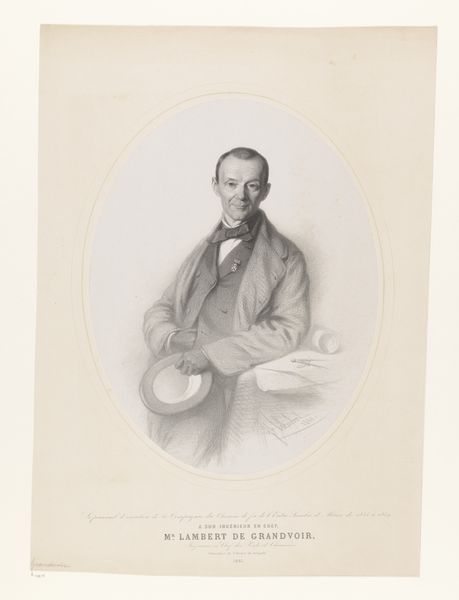
paper, engraving
#
portrait
#
pencil drawn
#
neoclacissism
#
paper
#
pencil drawing
#
line
#
engraving
#
realism
Dimensions: height 555 mm, width 435 mm
Copyright: Rijks Museum: Open Domain
Curator: Looking at "Portret van Cornelis Theodorus Elout," an engraving from sometime between 1822 and 1845 here at the Rijksmuseum, my immediate impression is one of almost austere reserve. The precision of line creates a striking image, and, for me, there’s a coolness, despite the subject's somewhat relaxed pose. Editor: Yes, the realism is undeniable; you can almost feel the paper's texture just looking at it! Tell me more about this gentleman and how such a work might have been produced. I'm very much wondering about the conditions of its making, not just its aesthetics. Curator: Cornelis Theodorus Elout was a prominent Dutch statesman. The portrait, typical of Neoclassical portraiture, seeks to capture his likeness and status through careful rendering of his features and attire. His posture, the book, even the column in the background… these elements subtly communicate erudition and authority. The image carries significant cultural weight. Editor: It is intriguing how engraving, with its repetitive gestures, turns Elout, an actual man, into an ideal type. Engraving necessitates specialized skill; you'd need a trained artisan, and quality paper of course! Considering those material costs, plus labor, makes you consider accessibility—or the lack thereof! Curator: Precisely! The very *act* of having oneself rendered with such meticulous detail speaks volumes. The engraved portrait became a vehicle to project ideals. Look at the crispness of line; the control, even. It visually suggests his command in life. Notice how his gaze is fixed yet calm, emanating confidence. That symbolic communication must not be dismissed. Editor: Symbols aside, look closer – this isn't painting, so consider the tools. Metal, acids, physical endurance. I’d wager the engraver saw Elout more as planes and lines to replicate than a great leader deserving reverence. I imagine him as a worker translating reputation to material form, motivated perhaps less by symbolic intent, than his skill. Curator: Perhaps a meeting in the middle? No art exists in a vacuum, including a simple engraving. While the craftsman shaped the image on the copperplate, so to speak, cultural forces also guided the design and interpretation of the picture, right down to our present day engagement! Editor: I concede, but remember that that plate itself - its manufacture, circulation and the socio-economic aspects behind it matter. After all it is just a flat piece of laboriously inscribed material trying to represent three dimensions.
Comments
No comments
Be the first to comment and join the conversation on the ultimate creative platform.
